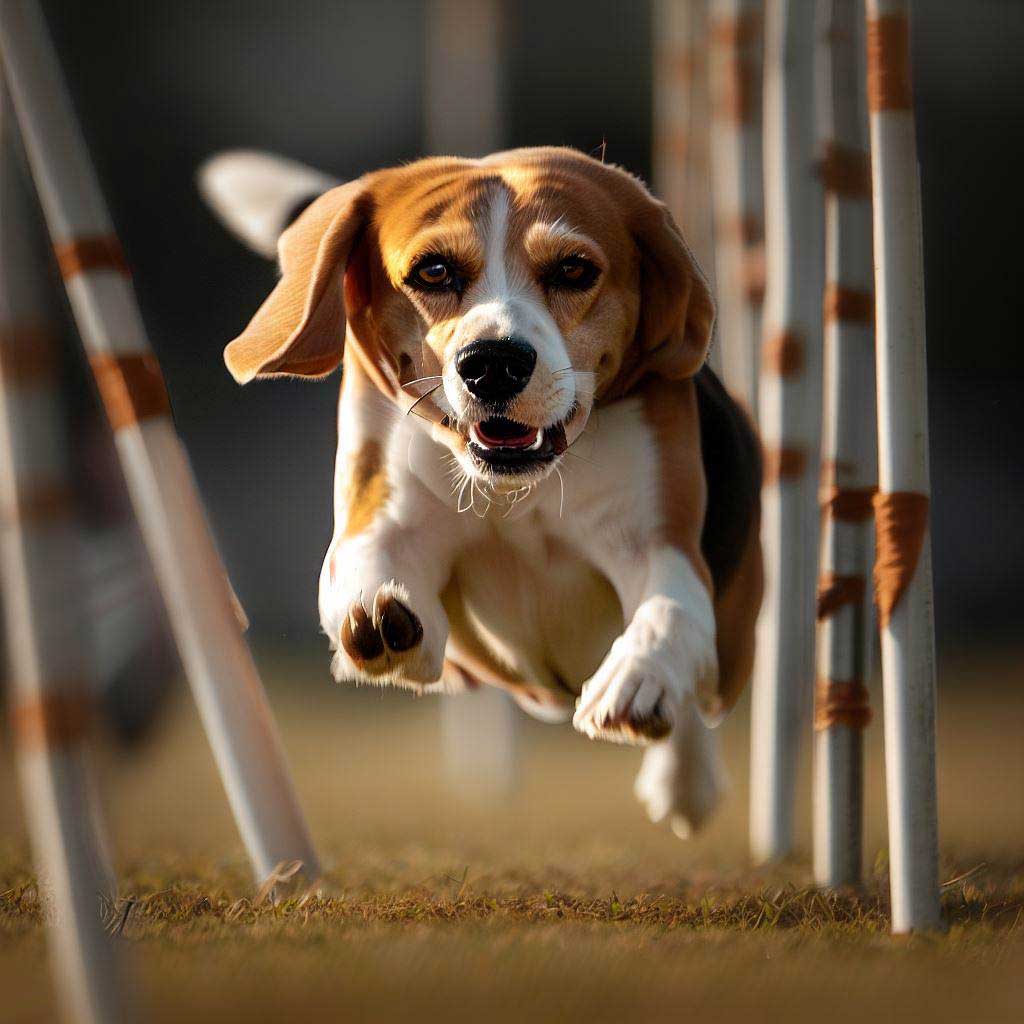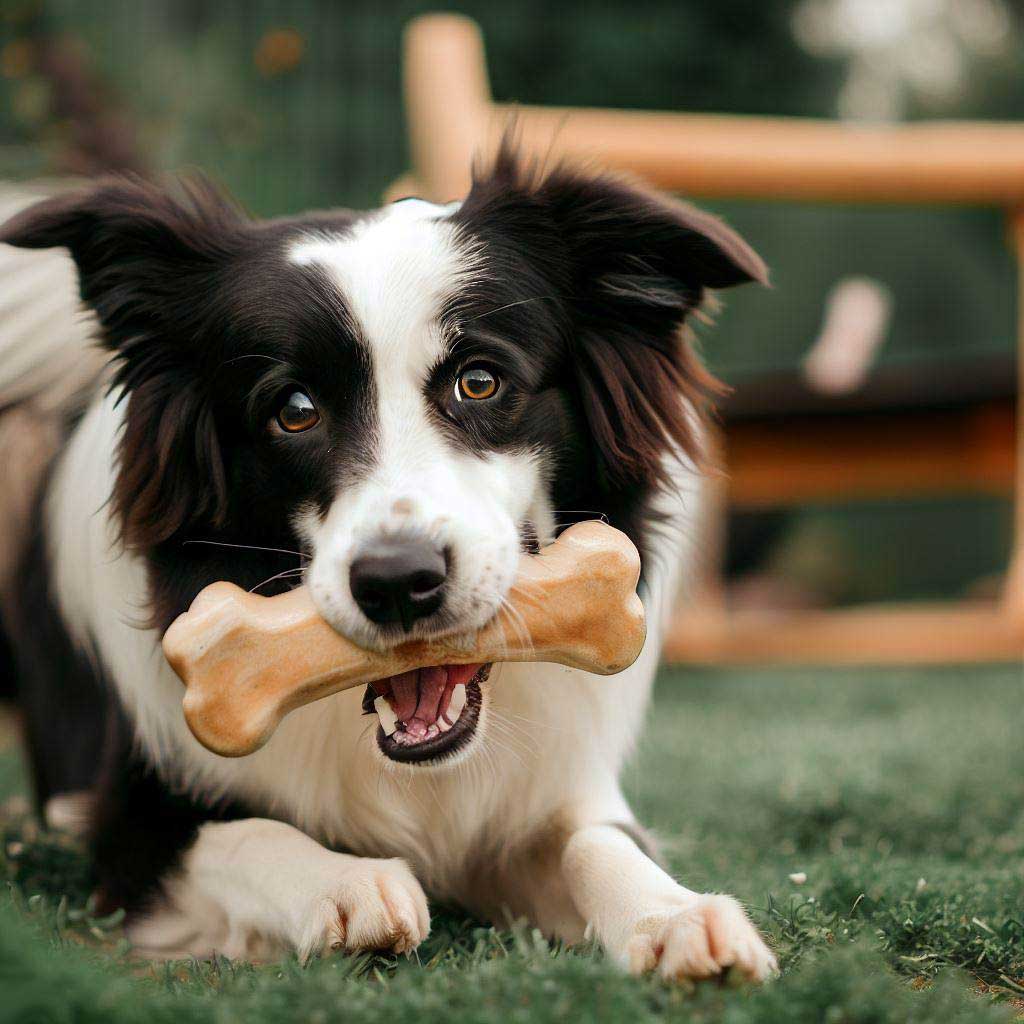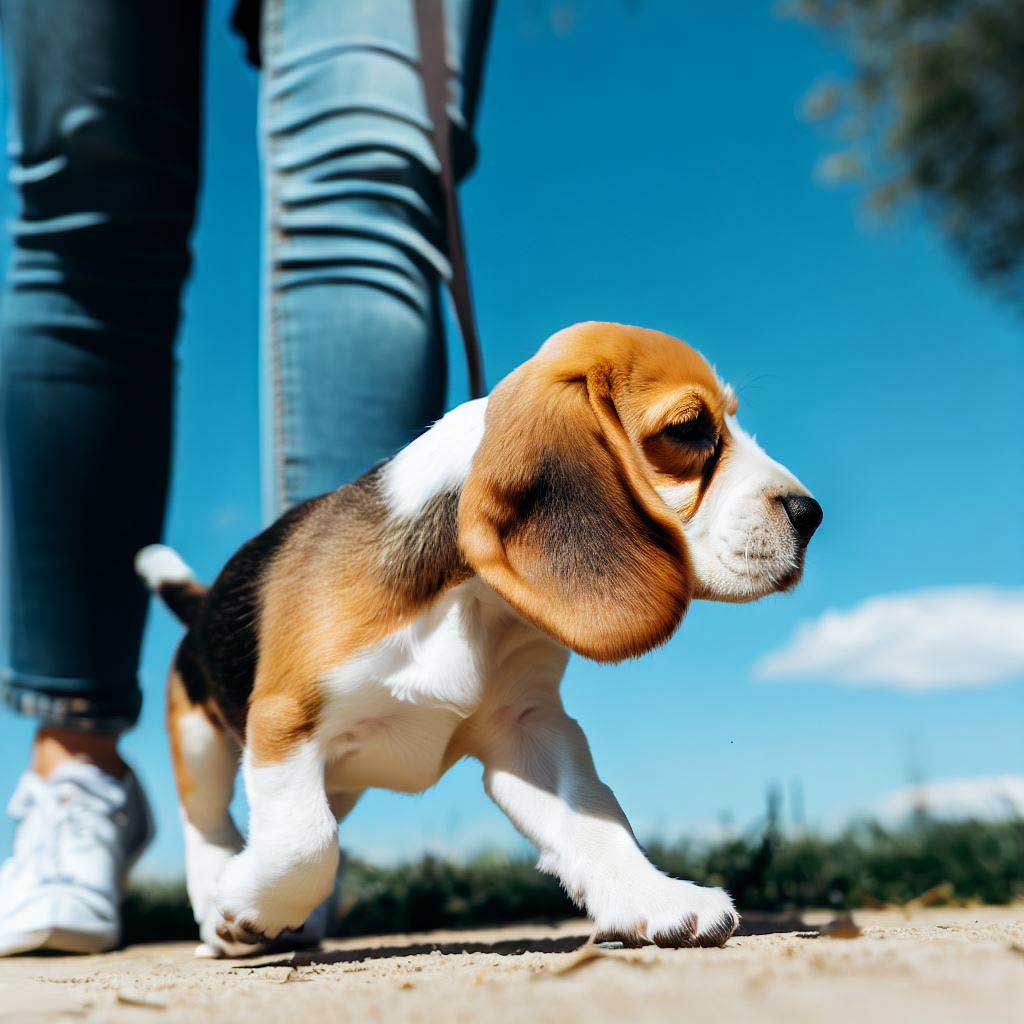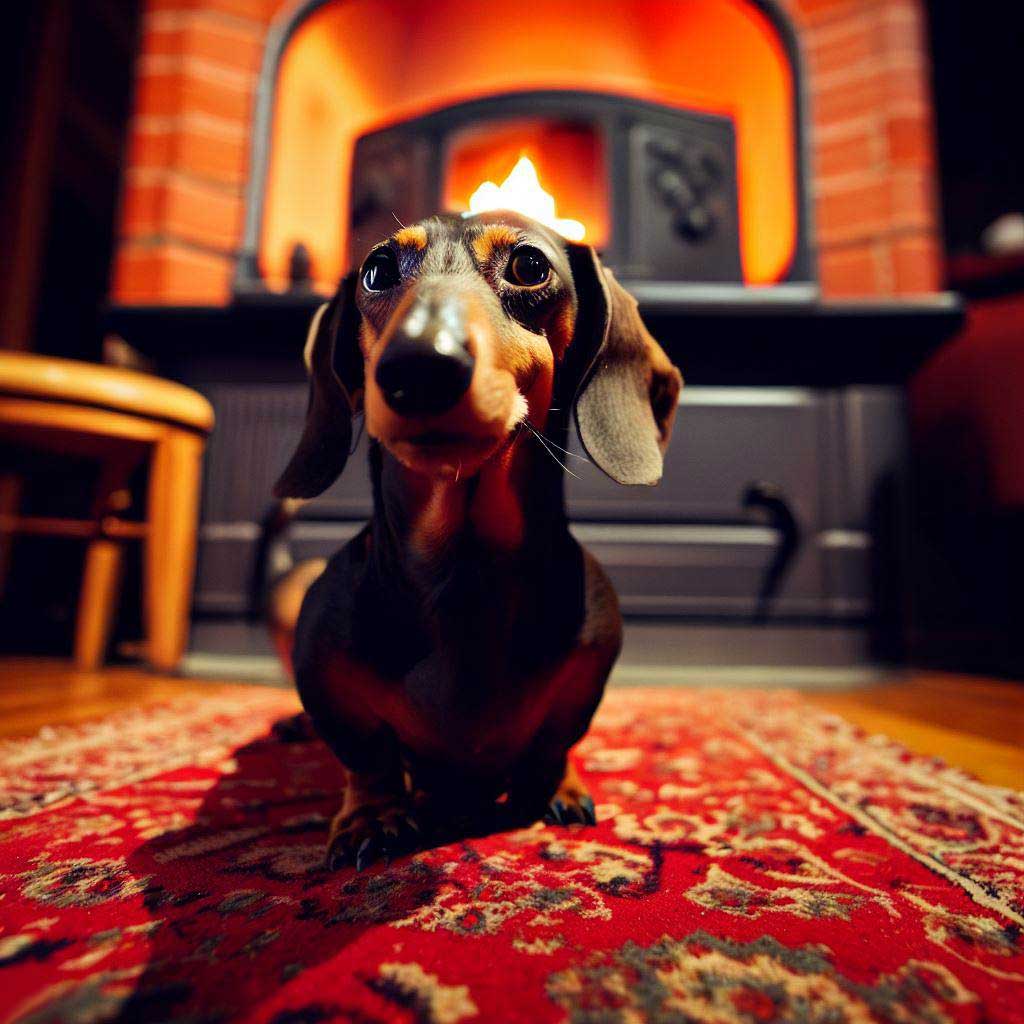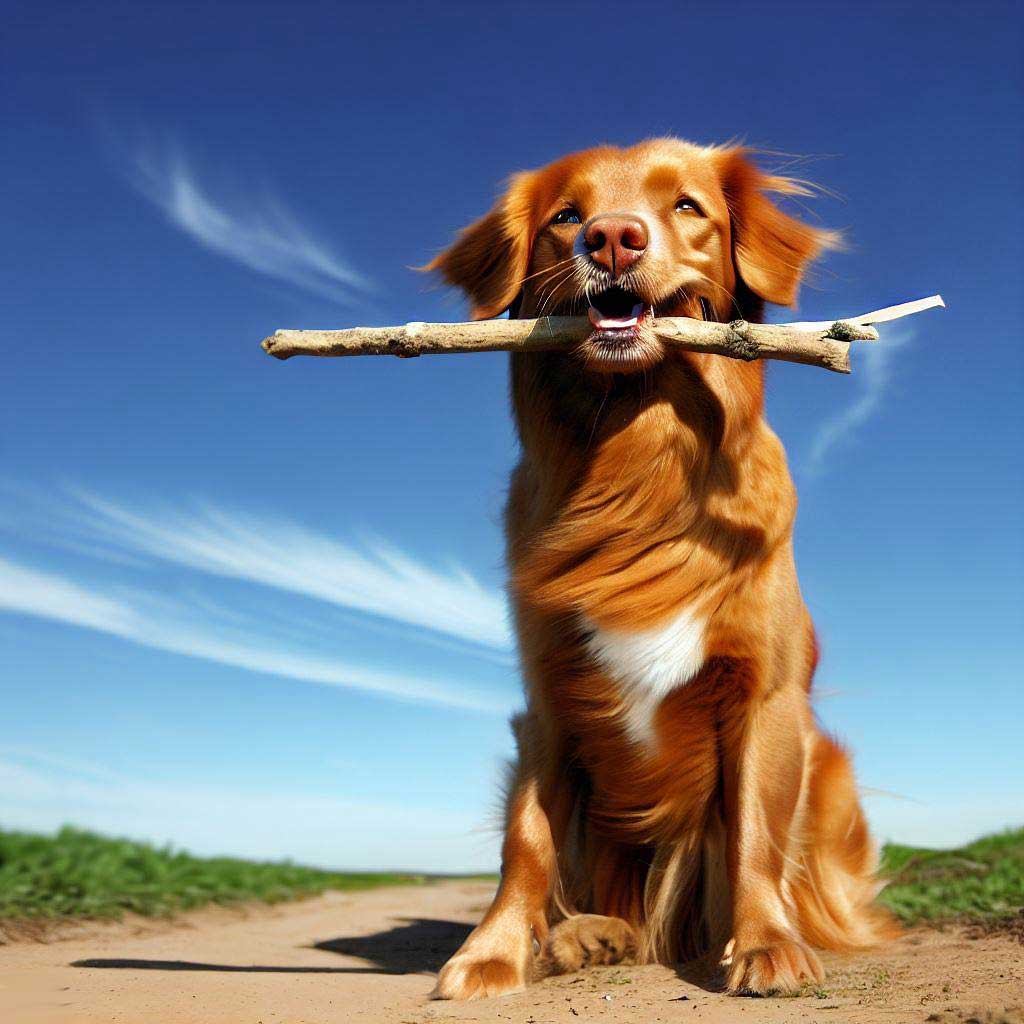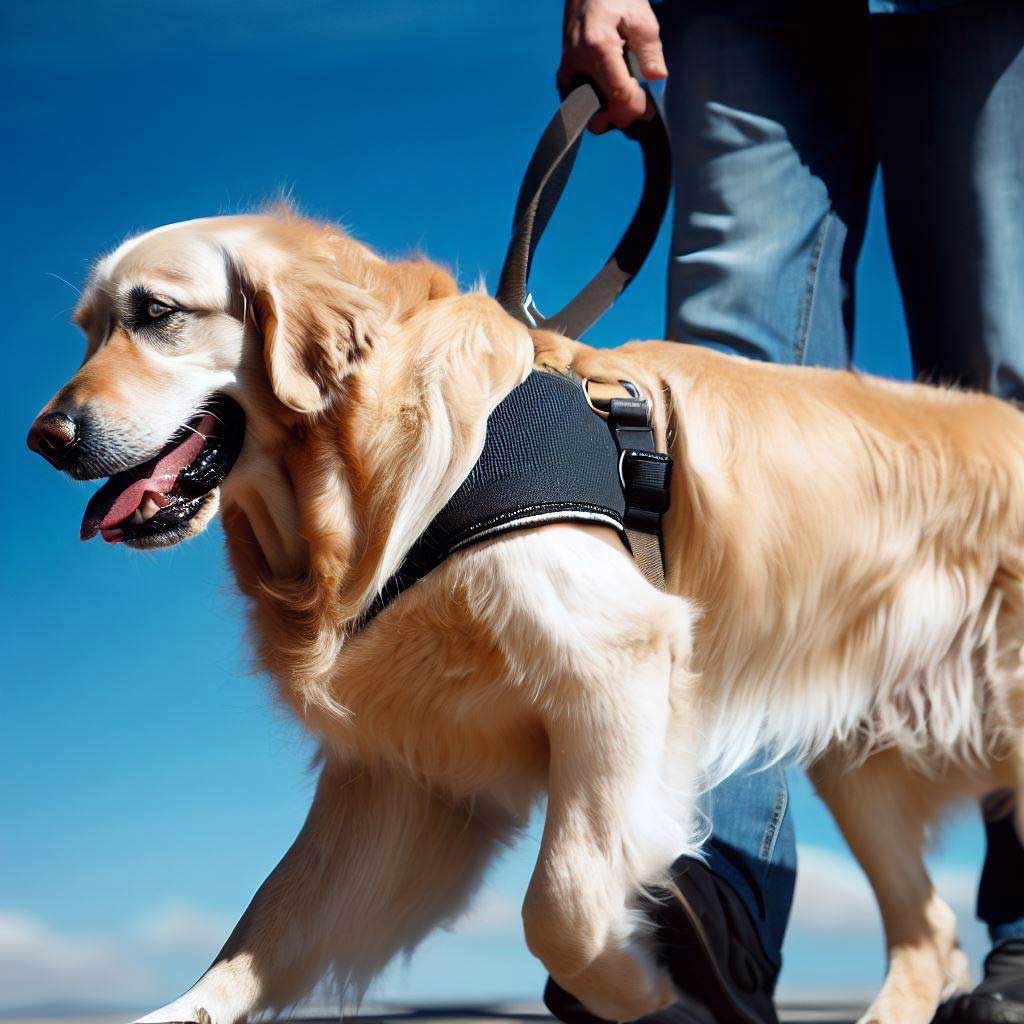Table of Contents
ToggleAgility Training for Dogs: Expert Insights. From basics to mastery, harness your dog’s energy and elevate your pups agility journey.
Training Your Dog in the Art of Agility
Ever been captivated by the agility competitions on TV? The excitement of watching a dog maneuver through an obstacle course is undeniably contagious. But imagine being a part of that excitement with your own furry friend!
Delving into agility not only offers excellent physical activity but also is a challenging mental game (especially for those high-energy breeds) and cements the bond between a pet and its owner. Ready to give it a whirl? Let’s guide you through the exciting world of agility training.
Defining Dog Agility
Dog agility is essentially a time-bound obstacle race, with a dog maneuvering under the guidance of its handler. A standard course houses around 15 varied challenges – from tunnels and ramps to jumps and weave poles, all of which the dog tackles in a specific order.
- Time-bound Obstacle Race: At its core, dog agility is a race against time, where the canine swiftly maneuvers through a series of challenges, guided by its handler’s cues.
- Varied Challenges: A typical agility course is laden with about 15 distinct obstacles. These range from intricate weave poles and high jumps to darkened tunnels and slanting ramps. The dog must tackle each of these in a predetermined sequence, showcasing its agility and obedience simultaneously.
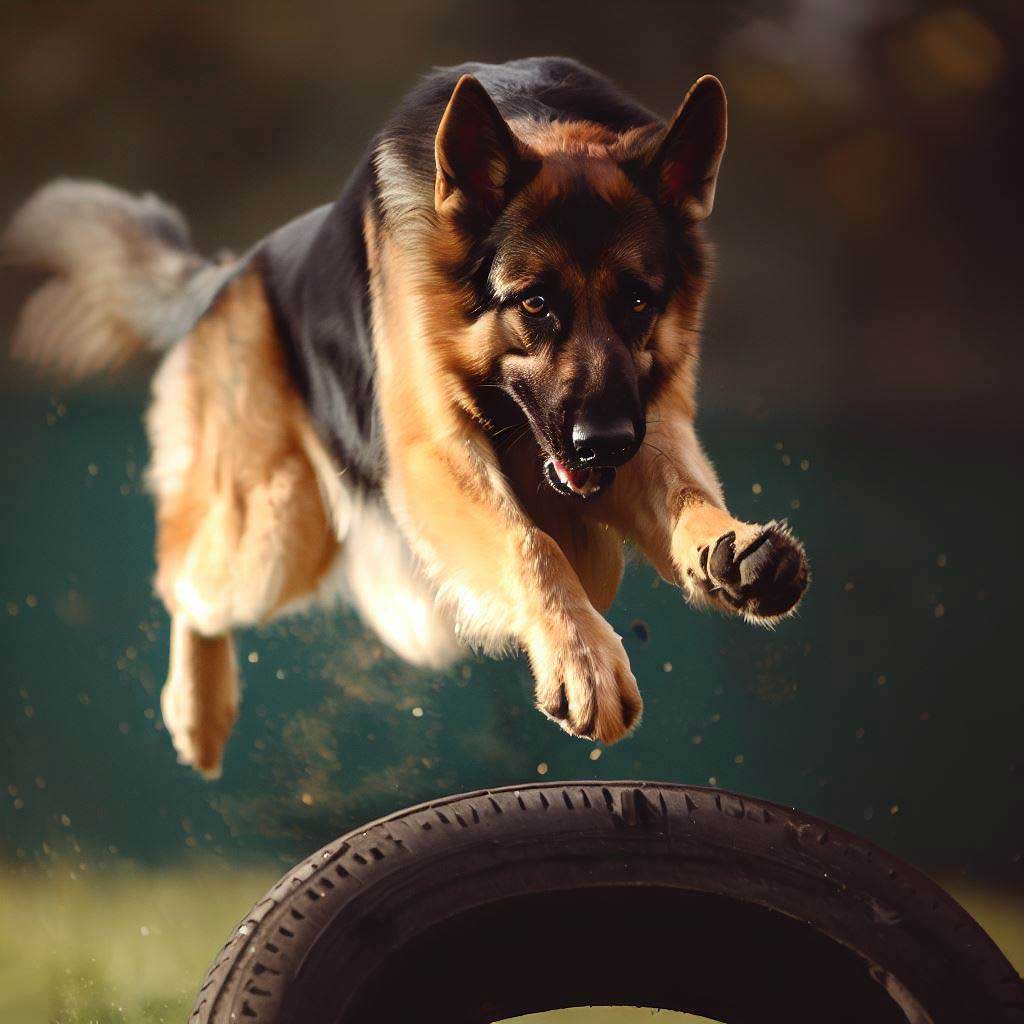
The Upsides of Dog Agility Training
Dog agility training has emerged as a popular activity among dog enthusiasts worldwide. This fast-paced sport offers a plethora of benefits, both for the dogs and their handlers. The reasons to immerse oneself in this exciting venture are numerous.
- Holistic Workout: When dogs indulge in agility training, they’re not just running aimlessly; they’re zigzagging through poles, leaping over hurdles, and darting through tunnels. These combined movements guarantee a full-body workout. It’s a perfect avenue for dogs, especially those with an abundance of energy, to release it in a productive manner, ensuring they stay fit and healthy.
- Mental Engagement: Beyond the physical, agility training is a cognitive challenge. The sport isn’t solely about the agility of the body, but also the agility of the mind. Navigating the various obstacles in rapid succession keeps dogs mentally alert. This heightened engagement acts as a deterrent to boredom, which often leads to undesirable behaviors in pets.
- Promotes Obedience: Mastery in agility is impossible without impeccable obedience. Dogs must be attuned to their handlers, following commands promptly. As they weave through complicated courses, their reliance on the owner’s instructions intensifies, thereby strengthening their overall obedience levels.
- Solidifies the Human-Dog Bond: The camaraderie that develops during agility training is palpable. As handlers guide their dogs through the course, they create a synergy based on mutual trust and understanding. Those who delve deep into the world of agility often find their bond with their furry companions enriched and strengthened.
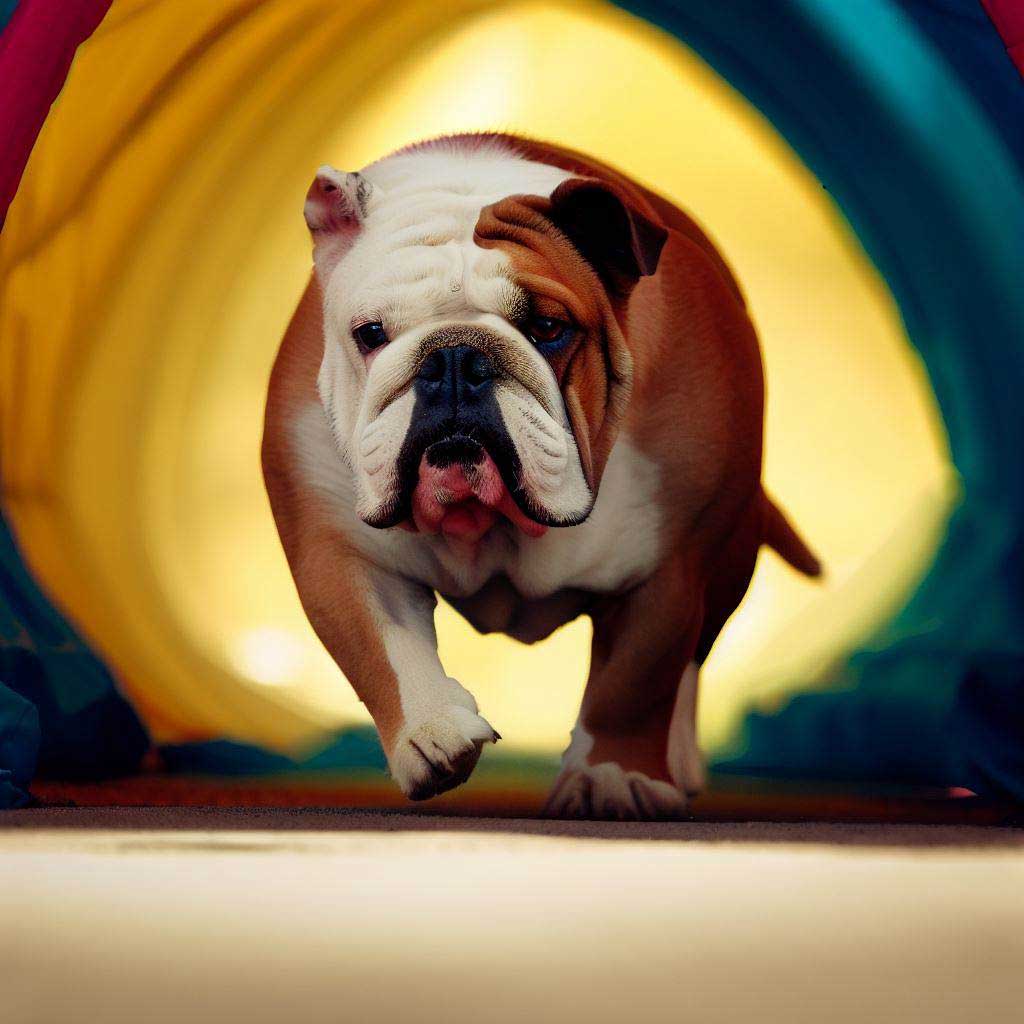
Is Your Dog Cut Out for Agility?
Engaging in dog agility requires a thorough understanding of your canine companion’s health, age, and temperament. Although it’s a versatile activity suitable for many, not all dogs might be apt candidates.
Health Considerations: Agility courses demand physical exertion. Therefore, it’s essential to ensure your dog is in good health. Dogs recuperating from recent ailments or senior canines with existing health challenges might not be ideal participants. For younger dogs, it’s advisable to initiate them gently into the sport, preferably waiting till they’re between 12 to 18 months. Breeds prone to ailments like joint or back problems might need modifications in the course, such as avoiding jumps.
Perfect Candidates for Agility:
- Restive Dogs: Those who exhibit anxiety or nervous behaviors can benefit immensely from agility training. The predictability and routine of the courses can provide a comforting and structured environment for them, potentially easing their apprehensions.
- High-Octane Working Breeds: Energetic breeds, such as the Border Collies, thrive in activities that challenge them both mentally and physically. Agility offers the ideal mix, satiating their inherent need for action and cognitive engagement.
- Easily Distracted Dogs: Canines that tend to lose focus or are easily sidetracked can find agility a valuable exercise. The demands of the course can help streamline their energy and significantly enhance their concentration skills.
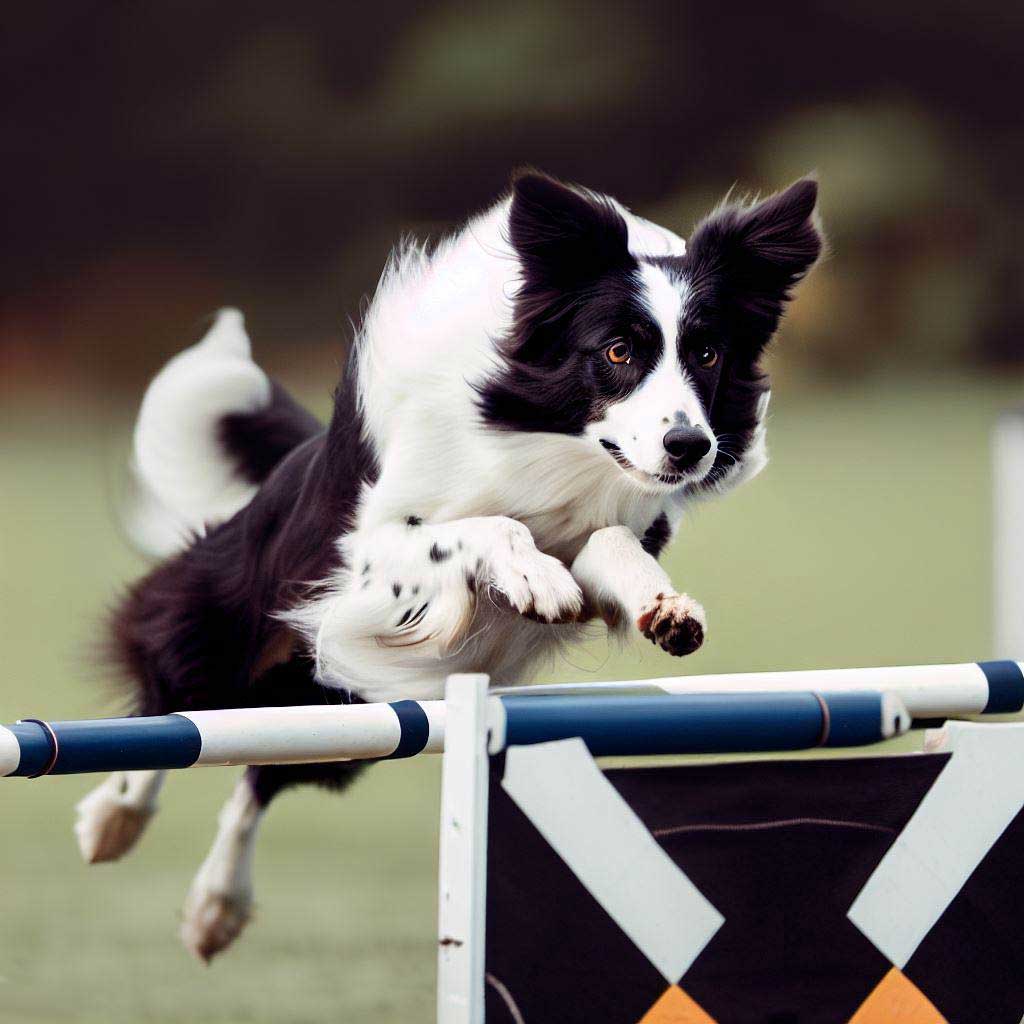
Is Agility Your Cup of Tea?
Delving into the world of dog agility requires you to be an active participant alongside your canine companion. It’s a partnership where both must be in sync for the best outcomes.
Physical Demands: Agility isn’t just a test for your dog but for you as well. The swift changes and fast-paced nature of the sport necessitate a reasonable degree of fitness on your part. If you’re just starting out, it might be beneficial to engage in exercises tailored to improve agility, strength, and coordination. This ensures you can match up to your dog’s energy levels and maneuvers.
Enjoying the Journey: Remember, it’s not just about winning or mastering the course. The essence lies in the shared experience and the bond you fortify with your dog. Start slow, cherish each moment, and make sure both you and your four-legged buddy genuinely relish the agility escapades.
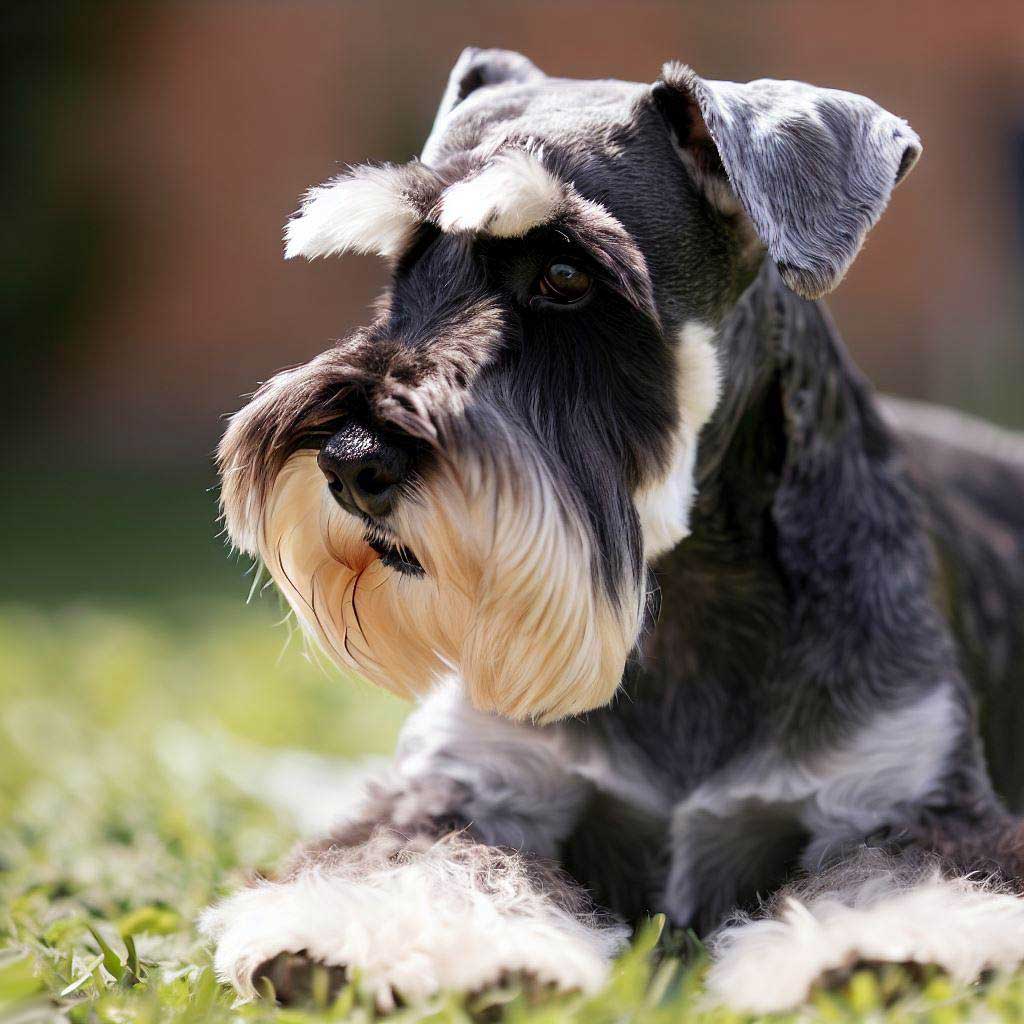
What to know before you start teaching your dog agility
Before your dog so much as sniffs an agility tunnel or jumps over a hurdle, it’s imperative to lay down some foundational skills. Agility isn’t merely about physical adeptness; it’s also about mental preparedness and a strong bond of communication between the handler and the dog. Here’s what you should focus on before diving into the intricate world of agility:
Establish a Base of Basic Commands:
Any agility coach will tell you that the key to a successful run lies in the basics. A dog that’s responsive to foundational commands such as ‘sit’, ‘stay’, and ‘come’ will find it easier to maneuver the agility track. In fact, the ‘stay’ command proves essential when tackling balancing challenges like the teeter board. Using positive reinforcement techniques, like treats or praises, can help ingrain these commands more effectively.
Hone Their Concentration:
An agility track isn’t just about physical challenges. It’s a world filled with distractions – from other enthusiastic dogs to the audience’s applause. Amid these distractions, it’s vital for your dog to remain laser-focused on your instructions. Introducing commands like “Watch me” during your regular walks or playtime can help enhance their attention span. Reward them for maintaining eye contact and resisting the myriad distractions.
Get Your Dog Used to Different Movements:
Agility isn’t solely about speed; it’s about versatility in motion. Before introducing them to the actual obstacles, spend time familiarizing your dog with various movements. This could range from making them walk backward, ensuring they’re aware of their paw placements, or even guiding them to navigate objects in your home or park. These exercises not only improve their bodily awareness but also help reduce any apprehension or uncertainty they might feel on encountering novel agility apparatuses for the first time.

Home-Based Agility Training Tips
The world of dog agility is filled with thrilling obstacles and challenges that test not only your dog’s physical abilities but also their mental prowess. For many dog owners, the thought of enrolling their pet in a professional agility class can be daunting, either due to financial constraints, time commitments, or just the sheer uncertainty of how their dog might react. This is where home-based agility training can be a game-changer.
Setting up your DIY agility course not only offers flexibility but also lets your dog learn in a familiar environment. Here are some detailed tips on how to set up these agility obstacles at home:
Jumps:
Before venturing into the jumps, it’s paramount to consult with your veterinarian. Dogs, especially specific breeds, can be vulnerable to back and joint issues, which can be exacerbated by repeated jumping. Start with an improvised hurdle using a plywood piece placed over stacks of books or bricks. The key is to begin at a minimal height and gradually raise it, always prioritizing your dog’s comfort and well-being.
Tire Jump:
This obstacle adds an element of fun to the agility routine. Utilize an old bicycle tire or even a hula hoop to create this jump. Initially, keep the tire grounded, allowing your dog to get accustomed to the new structure. As they gain confidence, you can slowly elevate the tire, ensuring their safety and ease during the jump.
Dog Walk:
Envision a narrow bridge-like structure with ramps on either side. The central element of this obstacle is balance. An old picnic table, when paired with wooden planks, can mimic the dog walk. It’s crucial to ensure the setup is stable to prevent any accidents. With time, your dog will master walking confidently across this structure, showcasing their balance and coordination.
Tunnel:
Tunnels can be a fun but challenging aspect of agility training. For beginners, a child’s play tunnel can be an excellent starting point. If you don’t have one, even sheets or large fabric pieces arranged in a tunnel-like manner can suffice. Some dogs might be wary of this enclosed space. Using treats or cheerful voice commands can encourage them to venture through. Remember, patience is vital; allow your dog to take their time to get accustomed.
Weave Poles:
This obstacle is about precision and swiftness. Arrange 10-15 vertical poles (ski poles or PVC pipes work well) in a straight line, creating a weaving path for your dog. When starting out, keep considerable spacing between each pole, ensuring your dog can navigate without knocking them over. As they master the weave, you can slowly reduce the gap between poles, increasing the intricacy of the challenge.
Teeter Board:
The teeter board is a test of balance, confidence, and trust between the dog and the handler. Introducing your dog to moving surfaces can be initiated with objects like skateboards. As they get comfortable with the motion, you can progress to a makeshift teeter board – a wooden plank balanced on a rounded pipe or a small cylindrical block. Positive reinforcements are invaluable here. Every time your dog successfully navigates the teeter, reward them. This not only boosts their confidence but also reinforces the learning.
To sum it up, home-based agility training offers a unique blend of challenge and comfort. While the DIY obstacles might not replicate the professional courses in entirety, they lay a strong foundation. The familiar surroundings, coupled with the flexibility of practicing at one’s own pace, can be a boon for both the handler and the dog. The journey of agility is filled with highs and lows, but with persistence, patience, and the right approach, it can be an enriching experience for you and your furry companion.

Complete Training With Sequencing
The fascinating world of dog agility does not end at merely mastering individual obstacles. The culmination lies in the seamless transition from one obstacle to another in a rhythmic and coordinated manner. This harmonious stringing together of obstacles is aptly termed “sequencing.”
Setting the Pace with Dual Obstacles:
As you introduce your dog to sequencing, simplicity is paramount. Start with two distinct obstacles that your dog has previously mastered. A popular choice is the combination of a jump followed by a tunnel. Begin by clearly commanding “big jump.” The trick lies in the transition. Just as your furry friend is airborne, preemptively guide it to the next challenge by announcing “tunnel”, simultaneously steering towards the tunnel’s entrance.
The Essence of Timing:
In agility training, timing isn’t just a skill; it’s the lifeline of sequencing. A slight delay in your command or an early cue can send mixed signals to your dog. When the guidance is not immediate or clear, dogs often resort to their instincts, making spontaneous choices that might not align with the course’s sequence. Such instances underscore the importance of the handler’s role in maintaining the course’s fluidity.
Building up the Sequence:
As with any training, gradual progression is essential. Once your dog showcases proficiency in navigating two linked obstacles, it’s time to up the ante. Introduce a third challenge, ensuring each transition is smooth. Continue this pattern, progressively adding more obstacles. When your dog can glide through an entire sequence effortlessly, embracing every twist and turn, it stands ready for the grand stage: competitive agility.
In essence, sequencing transforms individual mastery into a choreographed dance of agility. It demands trust, understanding, and impeccable timing between the dog and the handler. As you embark on this journey, celebrate each small victory, and remember that every champion, whether canine or human, started with a single step and then another. The magic lies in connecting those steps.

Agility Training for Dogs Summary
Delving into dog agility training offers a unique blend of excitement and discipline, beneficial for both dogs and their human counterparts. Not merely a playful activity, it plays a pivotal role in:
- Obedience Enhancement: The very nature of agility instills and reinforces commands, facilitating seamless communication between the dog and handler.
- Concentration Boost: Navigating through intricate courses demands unwavering attention, refining the dog’s focus and responsiveness.
- Behavioral Rectification: For dogs with energy to spare or minor behavioral issues, agility can serve as a constructive outlet, channeling their energy productively.
Whether you’re contemplating a DIY approach at home with homemade obstacles or leaning towards structured professional courses, it’s crucial to have your vet in the loop. Their insights ensure a safe and tailored training journey for your beloved canine.
And remember, each dog, from the bouncing puppy to the dignified elder, presents a training journey that’s both enlightening and challenging. It’s a dance of patience, repetition, and abundant love that builds trust and understanding.
If ever you miss a step or two in this dance, fret not! Online dog training courses are here to guide you back into rhythm. A perfect starting point? “Best Online Dog Training Courses: Any Dog Will Love“. Diving deep into 15 promising courses, and highlighting the top three, it ensures you never miss a beat.
Did you read my last article on Alpha dogs? Explore revealing top insights and myths debunked, offering the blueprint to effective dog leadership. If yo have a dominat pupy, it’ll be worth the read “How Do I Show My Dog I am the Alpha?“
And next on the table is a great article on clicker training dogs, titled “How to Use a Clicker to Train a Dog: Explained“. Clicker training is an effective and humane way to teach your furry friend new tricks and behaviors through positive reinforcement. Check it out.
